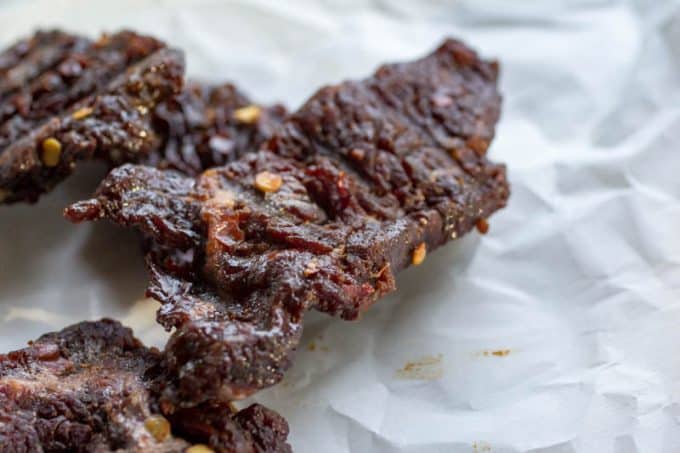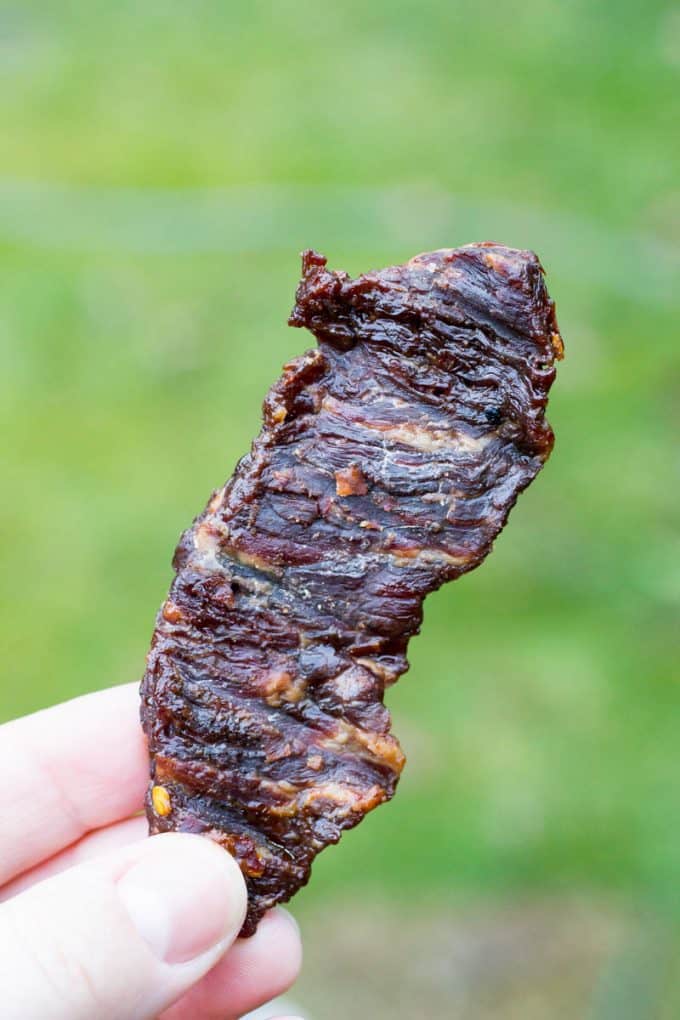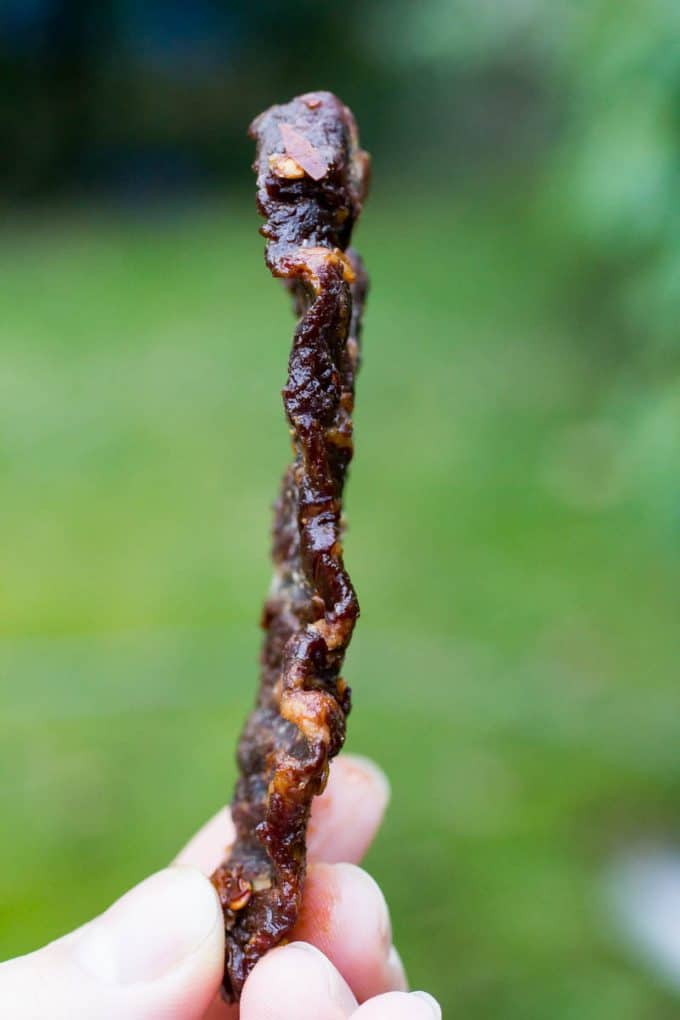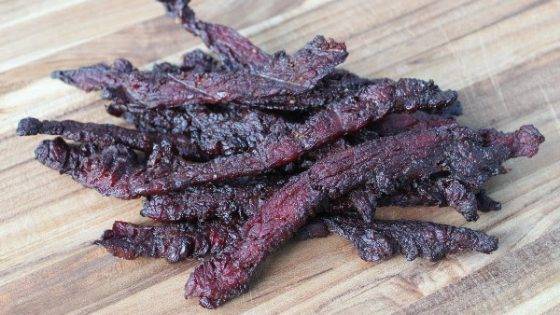Jerky is a tasty and portable snack that has been enjoyed for centuries. With the rise in popularity of pellet smokers, making jerky at home has never been easier. This article will provide a step-by-step guide to making delicious jerky in a pellet smoker.
Benefits of Using a Pellet Smoker
Pellet smokers provide some key advantages for making jerky at home:
- Consistent low temperature: Pellet smokers can maintain a low temperature, usually around 180-225°F, which is perfect for slow drying jerky without cooking it.
- Smoke flavor: The wood pellets impart a lovely smoky flavor as the jerky smokes for hours. This takes jerky to the next level compared to just using an oven or dehydrator.
- Set it and forget it: Once you set the temperature, pellet smokers do not require constant monitoring like an oven or stovetop would. The jerky can smoke unattended for hours.
- Large capacity: With multiple racks, pellet smokers allow you to make large batches of jerky at once

Step 1: Select Your Meat
The first step is choosing what meat you’ll use. Here are some top options:
- Flank or sirloin steak: Very lean so it makes great jerky. Cut across the grain into long, thin strips.
- London broil: Also a lean cut that produces chewy jerky slices.
- Chicken or turkey breast: Remove skin and slice thinly with the grain.
- Ground meat: Form into a flat sheet on a pan before dehydrating.
Avoid fatty cuts of meat as they won’t dry properly. Lean meat works best.
Step 2: Prepare the Meat
Once you’ve selected your cut of meat, you’ll need to prepare it:
- Trim off any visible fat, which can go rancid.
- Cut into strips about 1/4 inch thick. Cut with the grain for chicken/turkey, against the grain for beef.
- A meat slicer makes perfectly even slices, or freeze meat slightly to firm it up for hand cutting.
- Cut meat into uniform strips or squares for even drying.
Step 3: Make a Marinade
A flavorful marinade adds delicious flavor and tenderizes the meat. Try any of these options:
- Soy sauce, brown sugar, garlic – A classic sweet and salty combo
- Worcestershire, brown sugar, black pepper – Bold and tangy
- Barbecue sauce, chili powder – For a southwestern kick
- Teriyaki sauce, sesame oil, ginger – Asian inspired
- Hot sauce, lime juice, cumin – Mexican style
Get creative with spices, herbs, citrus, etc. Marinate strips in a zip top bag or baking dish for 1-24 hours.
Step 4: Prepare Your Pellet Smoker
Before loading the jerky, make sure your smoker is ready to go:
- Set temperature between 160-180°F. Lower temp = slower drying.
- Allow smoker to preheat adequately before adding jerky.
- Smoke with your desired wood pellet flavor – hickory and maple are popular.
- Line racks with parchment paper for easy cleanup.
Step 5: Load In Your Jerky
Once preheated, it’s time to load up the jerky:
- Pat off excess marinade with paper towels so strips aren’t dripping wet.
- Place strips directly on racks without overlapping. This allows airflow on all sides.
- Use multiple racks to make large batches, rotating racks if needed.
- Put a pan below to catch drips – don’t want to start a grease fire.
Step 6: Smoke and Dry
Now comes the fun part – smoking and drying:
- Smoke jerky for 4-6 hours. After 2-3 hours, flip all strips.
- Towards end of smoke, start testing doneness. Jerky should be dry but still pliable.
- If needed, finish in oven on lowest setting to fully dry.
- Remove from heat and pat off any beads of oil with a paper towel.
- Cool completely before storage.
Step 7: Store Properly
To maximize freshness, be sure to store properly:
- Fully cool jerky before storage, don’t seal when warm.
- Use sealable plastic bags, exclude as much air as possible.
- Store in a cool, dark place like the pantry. Or refrigerate for longer life.
- For maximum freshness, freeze portions in vacuum seal bags. Thaw before eating.
- Properly stored, jerky can last 1-2 weeks at room temp or 2-3 months in the fridge.
Additional Pellet Smoker Jerky Tips
And a few extra pointers for success:
- Use curing salts for extended shelf life but these are optional.
- Start checking doneness after 3 hours. Different cuts dry at different rates.
- A food dehydrator can be used for the full drying process if needed.
- After smoking, finish in a 200F oven on racks if you need more drying time.
- Use a meat slicer for perfectly thin, uniform slices. Makes a big difference.
- Letting meat rest 20-30 mins after slicing allows moisture to disperse evenly.
- Rotate racks if your smoker has hot spots. Cold spots mean more time needed.
- No need to rinse off marinade before smoking. Just pat meat dry.
Make Some Delicious Jerky in Your Pellet Smoker
With a quality pellet smoker, you can now make professional level jerky from the comfort of home. While it does require some time, the active work is minimal.Experiment with flavors and meat types until you dial in exactly what you love. Make big batches to share or enjoy yourself. The possibilities are endless with this age-old snack!

How to make beef jerky on your pellet grill
- Pick a beef cut with less fat, such as top sirloin, London broil, flank, etc. ) fattier cuts will spoil faster.
- Slice the meat against the grain, making cuts that are about 1/4 inch thick.
- After slicing your meat, marinate it for at least 6 hours but no longer than 24.
- Keep an eye out for hot spots along the edges of your grill and remove pieces as necessary.
- Never, ever, ever use liquid smoke in the marinade, I repeat, never. Unless you insist.
- Set it to smoke and keep it there all the time. (180 degrees).
- Make enough to share.

Beef Jerky | How to make Beef Jerky in a Pellet Grill
FAQ
What temperature do you cook beef jerky in a pellet smoker?
Jerky should be smoked for 2 to 2 1/2 hours at 225°F in a smoker or pellet grill.
Can you smoke jerky on a pellet smoker?
The jerky should bend but not break. The “bend test” is the most crucial factor in determining whether jerky is finished. Bend the same test piece in half to check its flexibility while handling it (ideally at or near room temperature). The jerky ought to flex, then eventually snap, but not break off.

